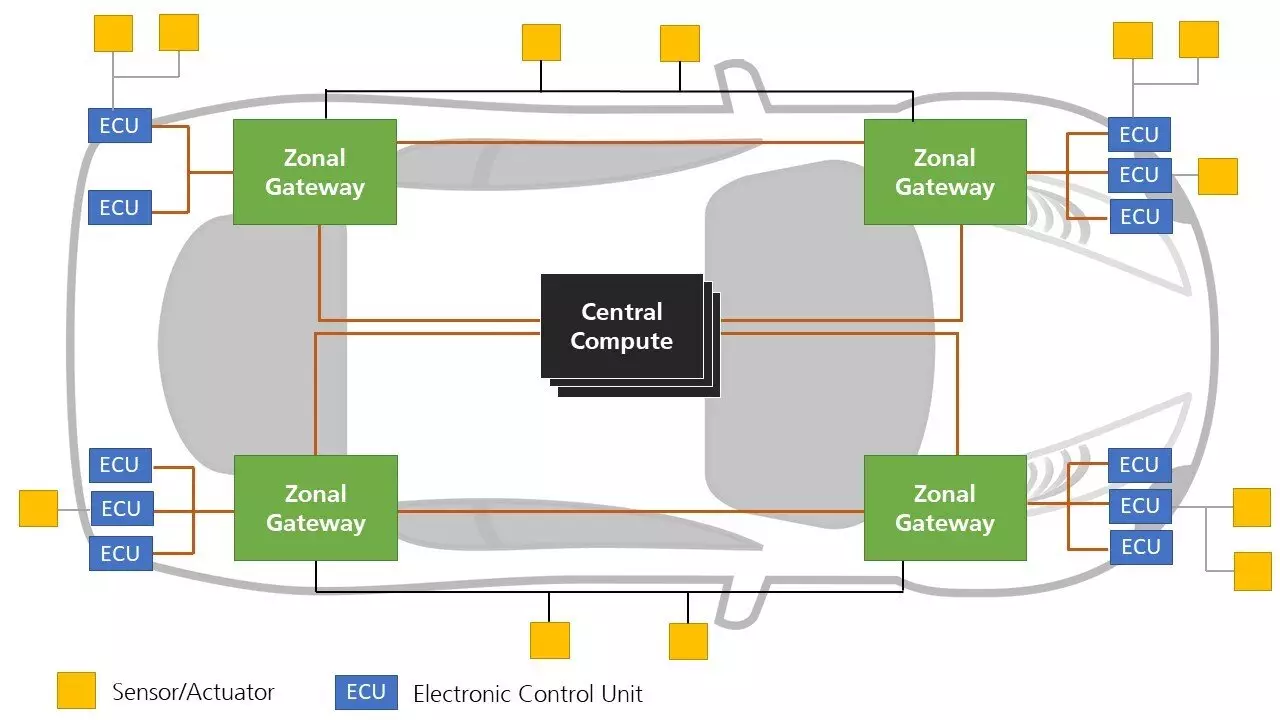In today’s world, modern cars are equipped with a myriad of electronic components and assistance systems, leading to complex management issues and increased weight due to the cable harnesses. However, researchers at the Fraunhofer Institute are spearheading a groundbreaking project to revolutionize the computer architecture in cars, paving the way for highly automated and connected vehicles.
The joint research project, known as CeCaS (Central Car Server—Supercomputing for Automotive), aims to streamline the management of electronic components in vehicles by centralizing control through a supercomputing platform. This innovative approach will allow for easier updates and integration of new functions without the need for complex interconnections of multiple computer systems.
One of the core technologies being explored in the CeCaS project is Time-Sensitive Networking (TSN). This technology enables the development of an extremely reliable Ethernet backbone that operates in real-time, allowing for efficient communication between components while prioritizing tasks based on their importance. Dr. Frank Deicke, head of Data Communication and Computing at Fraunhofer, emphasizes the significance of TSN in achieving real-time capabilities and reliability in vehicle systems.
The utilization of Ethernet as the foundational technology in the CeCaS project brings several advantages to the table. Ethernet’s flexibility and scalability make it adaptable for vehicles of varying sizes, performance levels, and functionalities. By combining Ethernet with IP cores, the project team aims to create a standardized platform for managing all components centrally, optimizing communication, and providing the necessary computing power in real-time.
The innovative computer architecture developed in the CeCaS project not only focuses on standardizing vehicle technologies but also opens the door for revolutionary update processes. Instead of relying on traditional mechanic services, vehicles can be updated wirelessly via Wi-Fi, similar to updating a laptop or desktop PC. This streamlined approach not only reduces costs but also enhances the overall efficiency of the update process.
Furthermore, the central control system implemented in vehicles through the CeCaS project will lead to a significant reduction in cable harnesses, ultimately reducing material usage during manufacturing. This reduction not only lowers costs but also contributes to making the vehicle lighter overall, enhancing its performance and fuel efficiency. Dr. Deicke highlights the potential for integrating new functionalities through the central control system, providing a glimpse into the future possibilities of vehicle customization.
The computer architecture envisioned in the CeCaS project represents a paradigm shift in vehicle construction methods, transitioning from domain-based control to zone-based management. With a few high-performance computing platforms overseeing multiple modules simultaneously, safety-critical systems and consumer-centric features alike can be efficiently managed and controlled. This evolution in vehicle technology promises to transform the driving experience and set new standards for automotive innovation.
The Fraunhofer Institute’s CeCaS project marks a significant step towards revolutionizing the computer architecture in vehicles, paving the way for highly automated, connected, and efficient vehicles of the future. By centralizing control, prioritizing tasks, and leveraging cutting-edge technologies like TSN and Ethernet, the project aims to enhance the performance, reliability, and customization capabilities of vehicles, ushering in a new era of automotive technology.


Leave a Reply